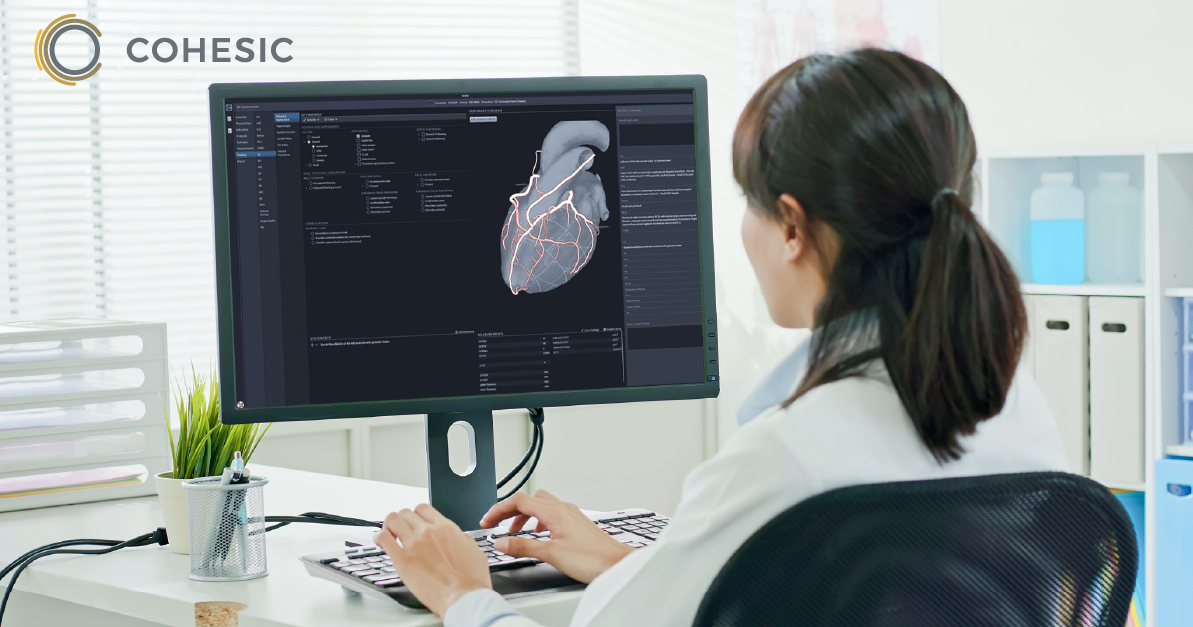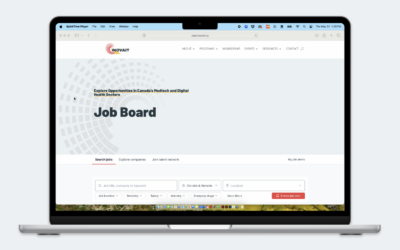Artificial intelligence (AI) has the potential to revolutionize healthcare. It can minimize diagnostic errors, optimize treatment plans and ultimately improve patient’s health. However, one critical factor holds this potential back: access to high-quality, standardized health data.
Jordan Engbers, Chief Science Officer of Cohesic, a data scientist who spent years in clinical research, is painfully aware of the chasm between the promise and reality of AI in healthcare. While an AI model might work within a study where researchers systematically gather, clean up, and standardize the data, real-world healthcare data is often too messy and unreliable to use for clinical decisions. As Engbers puts it, “There are tons of academically published models that can predict this or that outcome, but they can’t actually be used in practice. That’s because doctors don’t have the appropriate data to feed into the model.”
That’s why, in 2016, Engbers teamed up with Dr. James White, a Calgary-based cardiologist and then Director of the Stephenson Cardiac Imaging Centre, to build Cohesic. The company’s mission is to empower clinicians with actionable intelligence so that they can make more informed diagnostic and therapeutic decisions for cardiovascular care. The Cohesic team are well on their way to accomplishing this mission, and it all started with building the healthcare data infrastructure to standardize data across hospitals.
To make AI clinically viable, data must be integrated from existing clinical systems or collected directly by someone within the clinical workflow, a time-consuming and error-prone process. By automating and standardizing data collection and analysis, Cohesic reduces the time physicians spend reporting and interpreting data. Standardized data collection ensures that each piece of health information, from blood pressure readings to medical imaging, follows a consistent format. This improves data cohesion and allows AI models to more accurately identify patterns and risk potentials. Even without AI, this process of standardizing health data is good for patients, because it ensures that doctors can quickly access and interpret the comprehensive health data they need to make more informed decisions.
Cohesic’s flagship product is cardioDI (the DI stands for decision intelligence). cardioDI standardizes the workflow for advanced cardiovascular imaging services, populating relevant data from image-analysis software, electronic health records, and expert clinical interpretation into a comprehensive diagnostic report. cardioDI is designed to support the physician, allowing them to quickly capture relevant qualitative and quantitative data into the same system. For example, they can annotate an artery in a 3D heart image and code the section as containing a stent, as scarred or thickened with plaque deposits. These annotations are then combined with all other relevant data to compute patient-specific risk scores, generate standardized natural language reports, and provide clinical decision support.
How does this compare to the traditional method? Typically, when a doctor gets a CT scan report, they must integrate all of this information from disparate systems and then dictate a final report, all without the assistance of clinical decision support software. As you can imagine, this manual and error-prone process depends heavily on the individual physician to ensure quality, accuracy, and completeness. Plus, this manual process means the data are not recorded in a standardized way that can be delivered in real-time for an AI algorithm to analyze and provide trustworthy decision support. Doctors might report data points in different orders, using various descriptors or units. Clinicians might even hand draw a diagram to indicate a narrowed artery. As Engbers explains, Cohesic’s cardioDI system is “a win-win all around. You reduce errors and you begin to collect standardized health data from every imaging test, enabling you to then deploy AI tools.”
According to Christine Lorenz, CEO, a former Siemens executive and biomedical engineer who spent years improving clinical imaging systems before joining Cohesic in 2019 as COO, their products are currently in use in hospitals across North America that serve a combined total of 23 million patients.
cardioDI doesn’t just standardize health data and save physicians’ time; it also provides suggestions for further testing or treatments based on published medical guidelines and allows the physician to decide what to recommend. “We take long, dense guideline documents and embed them in the software to make them easier to apply in real-life situations,” explains Lorenz.
For example, the CAD-RADS guideline requires the doctor interpreting a cardiac CT exam to gather data regarding various types of abnormalities in a patient’s coronary arteries as well as clinical symptoms and then manually derive a risk score and recommendations for possible further tests. But doctors don’t always have time to calculate the risk score, nor look up the best course of action according to that score. cardioDI automatically calculates various risk scores and shares the published recommendations corresponding to that risk score. By automatically calculating risk scores and offering guideline-based recommendations, cardioDI ensures that patients receive evidence-based care promptly, potentially reducing the chances of preventable health complications.
Now, with support from INOVAIT, Cohesic is embarking on a project to demonstrate the feasibility of using AI in the real world, together with the Libin Cardiovascular Institute in Calgary and Sunnybrook Research Institute in Toronto. After spending years building a robust health database used by hospitals across the country, the company and its collaborators are building an AI prediction tool that will flag diabetic patients at high risk of developing heart disease. “The INOVAIT project benefits from the groundwork that we’ve done. Because we’ve been in the market for a number of years, we now have a continuously growing real-world, standardized health data to train and test AI models that can be delivered into clinical workflows,” Engbers explains.
In addition to supporting the Cohesic project, INOVAIT is engaging in initiatives to unlock Canadian health data for AI healthcare innovation, such as its recently released framework “Data Mobilization: Principles for safely and ethically harnessing Canadian health data to unlock innovation, economic growth, and better patient care” which you can read here.
For their INOVAIT project, Cohesic’s team is currently training a model to find common patterns within a dataset containing lab values, patient-reported outcomes, medical prescriptions, health records, and imaging biomarkers, across diabetic patients in the years leading up to a major adverse cardiac event, such as a heart attack or stroke. Results thus far suggest the model can accurately flag patients at risk of a future heart problem and also suggest what actions may be taken to reduce that risk.
Once the AI system is live in cardioDI, it will identify and warn physicians about high-risk factors for their patients so they can make better-informed decisions regarding their treatment plans. “Diabetes is a huge burden for all health systems, and one of the biggest complications that diabetic patients have is cardiovascular disease,” Lorenz explains.
Rather than building the AI model first, Cohesic flipped the usual script, first creating the platform to gather robust, high-value, standardized data across hospitals, and then building an AI model to make conclusions from the existing data. This approach, and their partnership with forward-thinking hospitals willing to share their de-identified data to help develop a made-in-Canada healthcare product, makes it far more likely that AI modelling will actually benefit patients.
“Instead of having simple diagrams or hand-drawn diagrams and dictated notes, now, we’re capturing high-quality health data for every single patient,” explains Engbers. “We’ve created a platform that enables us to get the health data that we need so that AI can meet its full potential and transform the lives and health of Canadians.”




